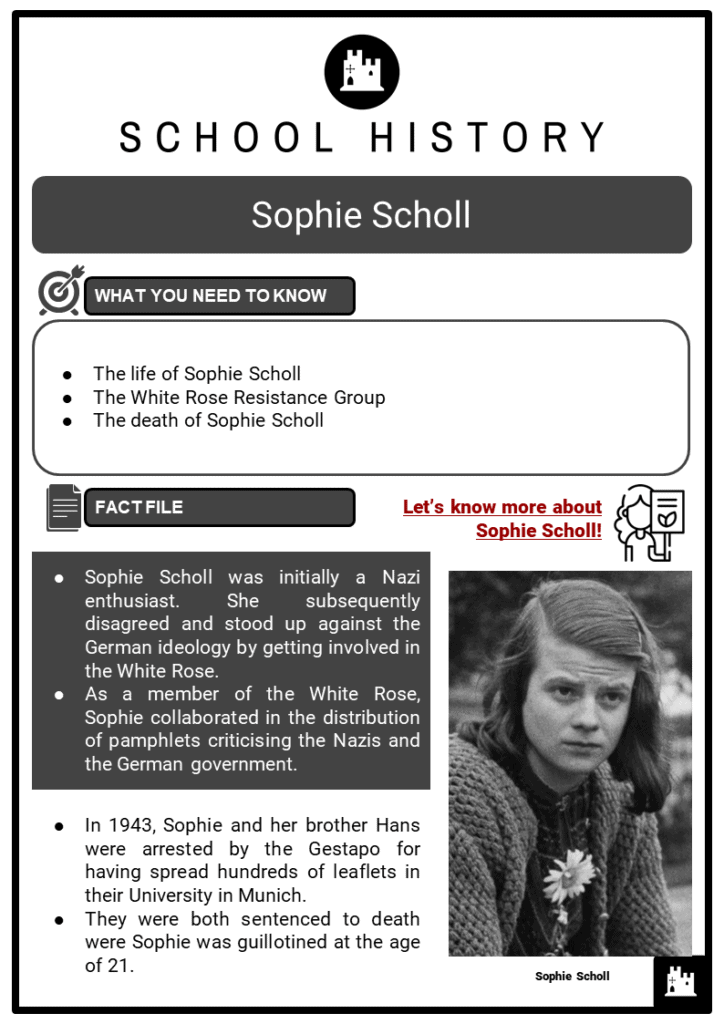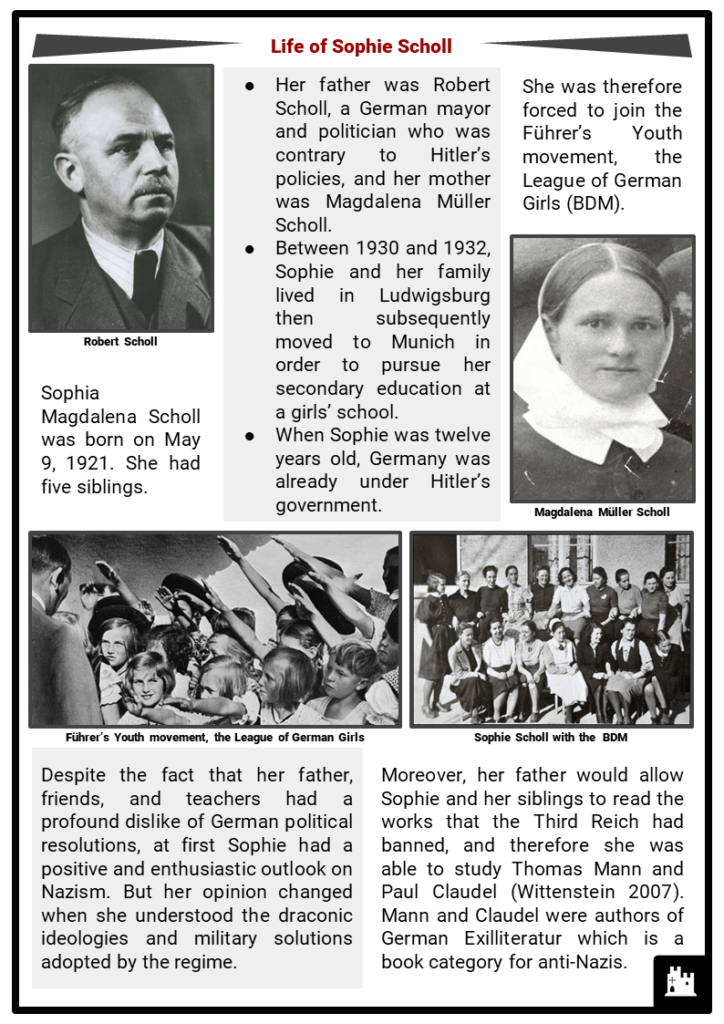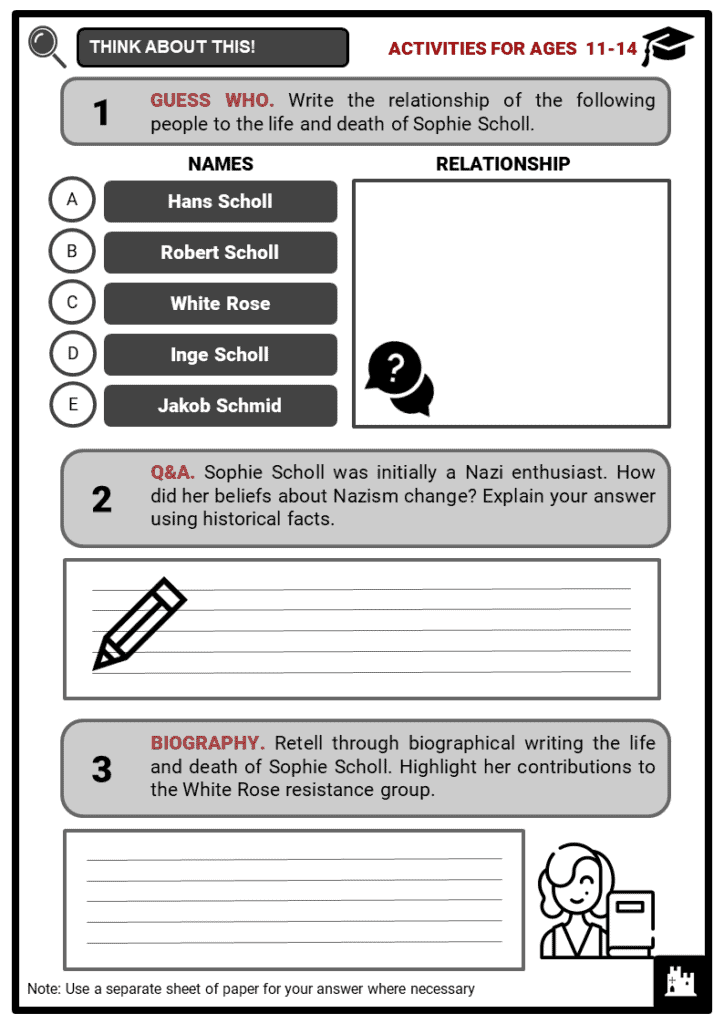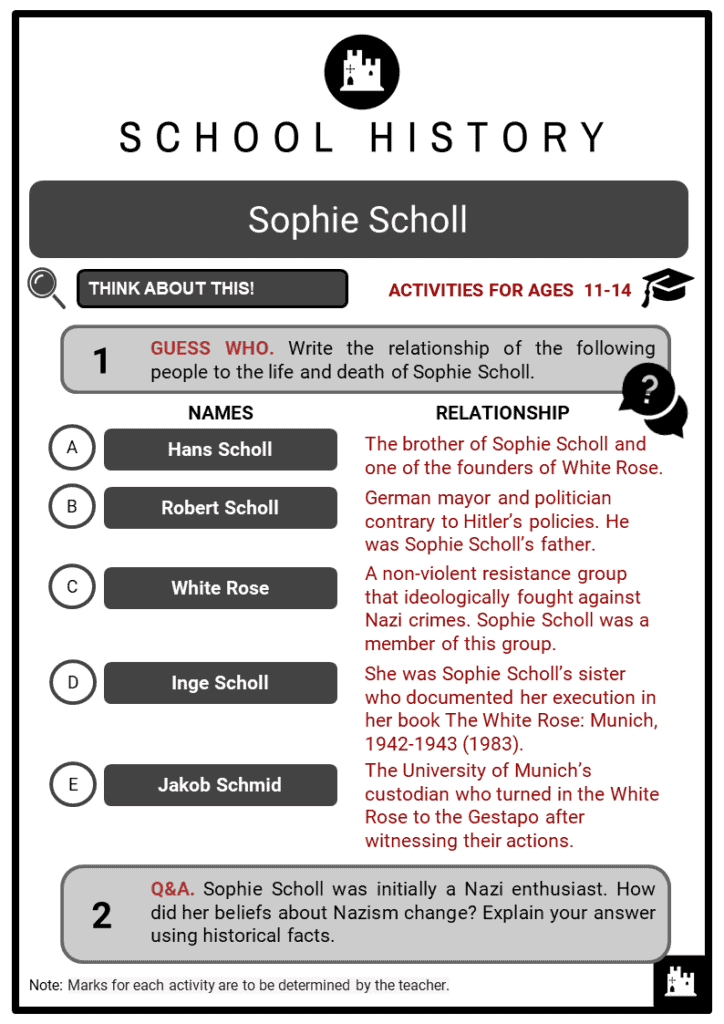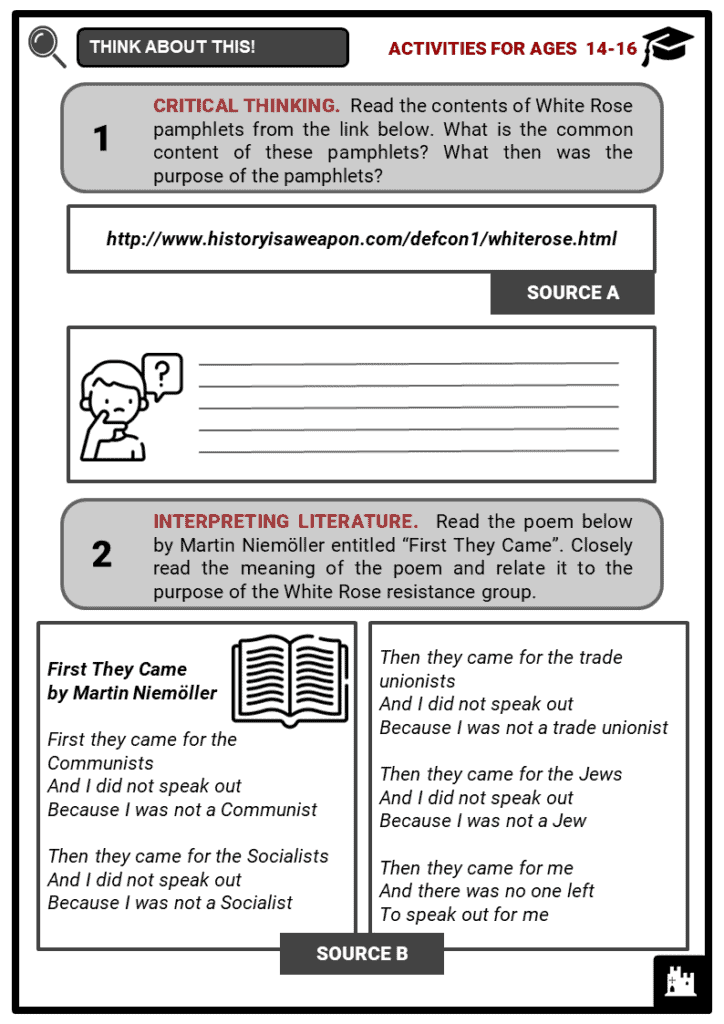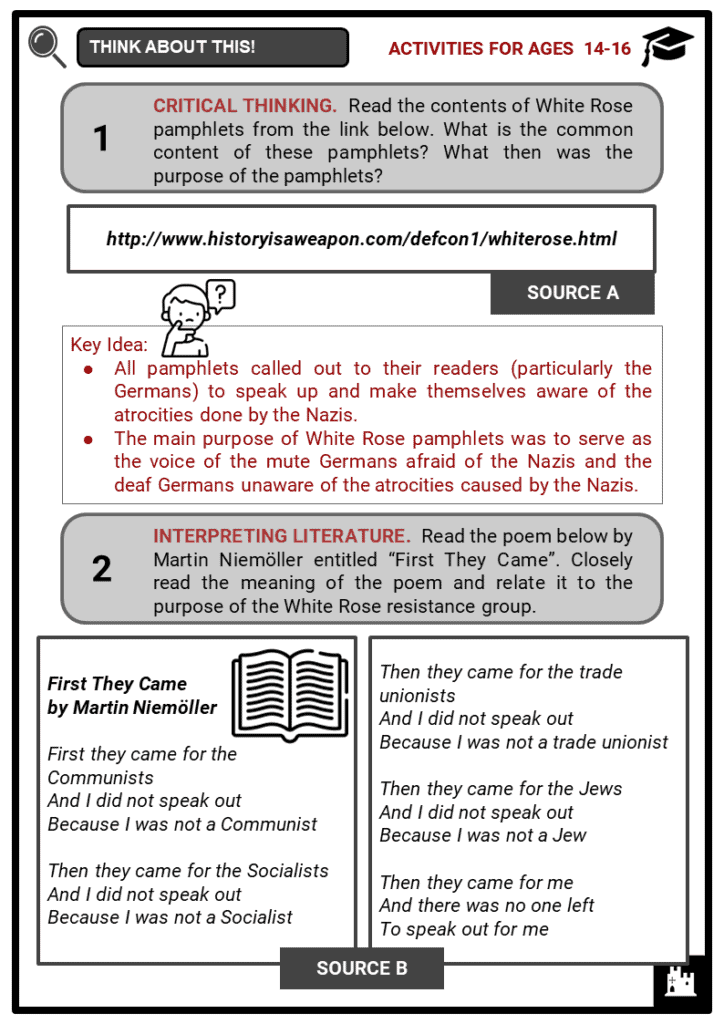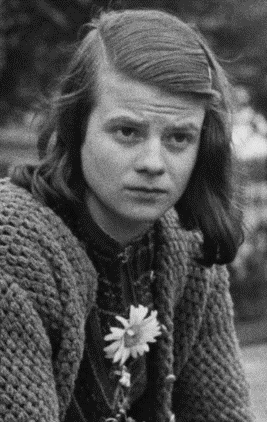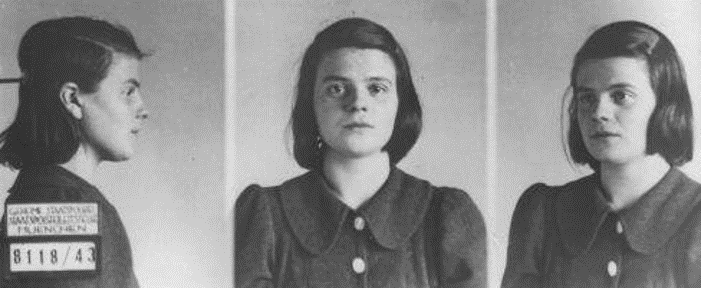Download Sophie Scholl Worksheets
Do you want to save dozens of hours in time? Get your evenings and weekends back? Be able to teach Sophie Scholl to your students?
Our worksheet bundle includes a fact file and printable worksheets and student activities. Perfect for both the classroom and homeschooling!
Table of Contents
Add a header to begin generating the table of contents
Summary
- The life of Sophie Scholl
- The White Rose Resistance Group
- The death of Sophie Scholl
Key Facts And Information
Let’s know more about Sophie Scholl!
- Sophie Scholl was initially a Nazi enthusiast. She subsequently disagreed and stood up against the German ideology by getting involved in the White Rose.
- As a member of the White Rose, Sophie collaborated in the distribution of pamphlets criticising the Nazis and the German government.
- In 1943, Sophie and her brother Hans were arrested by the Gestapo for having spread hundreds of leaflets in their University in Munich.
- They were both sentenced to death were Sophie was guillotined at the age of 21.
Life of Sophie Scholl
- Sophia Magdalena Scholl was born on May 9, 1921. She had five siblings.
- Her father was Robert Scholl, a German mayor and politician who was contrary to Hitler’s policies, and her mother was Magdalena Müller Scholl.
- Between 1930 and 1932, Sophie and her family lived in Ludwigsburg then subsequently moved to Munich in order to pursue her secondary education at a girls’ school.
- When Sophie was twelve years old, Germany was already under Hitler’s government.
- She was therefore forced to join the Führer’s Youth movement, the League of German Girls (BDM).
- Despite the fact that her father, friends, and teachers had a profound dislike of German political resolutions, at first Sophie had a positive and enthusiastic outlook on Nazism. But her opinion changed when she understood the draconic ideologies and military solutions adopted by the regime.
- Moreover, her father would allow Sophie and her siblings to read the works that the Third Reich had banned, and therefore she was able to study Thomas Mann and Paul Claudel (Wittenstein 2007). Mann and Claudel were authors of German Exilliteratur which is a book category for anti-Nazis.
- Sophie was a good artist and she developed her taste in art when she met the ‘“degenerate” modern artists’. They were opposed to the art being promulgated by the State, which ‘exalted the “blood and soil” values of militaristic Germany’ (Wittenstein 2007).
- In order to attend university, the young Sophie was obliged to teach kindergarten children at the Forbel Institute (in Ulm-Soflingen), and subsequently she became a nursery teacher for six months in Blumberg (Lisciotto 2007).
- These prerequisites imposed by the government contributed to making Sophie change her mind about to Hitler’s policies. Sophie was required to carry out such compulsory jobs in order to conform with the ‘Reichsarbeitsdienst’, i.e. the National Labour Service (Lisciotto 2007).
- In 1942, Sophie was finally admitted to the University of Munich (where her brother Hans Scholl also studied medicine), and she enrolled in biology and philosophy courses (Lisciotto 2007).
- During her years at university, Sophie was introduced to her brother’s friends, with whom she shared common intellectual interests such as art, literature, theology, music, and also physical activities such as hiking, skiing and swimming (Lisciotto 2007).
- However, they soon found common ground also in the domain of politics: in fact, the group started disagreeing more and more with the Nazi policies and created pamphlets and leaflets that condemned the German political activities.
- Sophie was now part of her brother’s passive resistance group, the White Rose. Although Sophie did not write any pamphlets, she played a fundamental role in their distribution since as a woman she had fewer chances of being stopped and interrogated by the SS.
- Sophie and the White Rose decided to speak up against the regime when they witnessed the Jews’ subhuman treatment and mass deportation.
- In fact, in 1935, the Nuremberg Laws condemned anyone who did not belong to the Aryan race by declaring them unworthy of German citizenship: such laws provoked much disapproval amongst resistance groups.
The White Rose
- Although Sophie was initially a Nazi enthusiast, she subsequently disagreed and stood up against their ideology by getting involved in the White Rose — a non-violent resistance group founded by Hans Scholl, Willi Graf, and Alexander Schmorell that ideologically fought against Nazi crimes.
- The group was responsible for the diffusion of underground pamphlets and articles that denounced the abominable and ‘inhuman’ actions carried out by the Third Reich.
- The members of the White Rose were mainly students and intellectuals that included artists, writers, philosophers, and professors.
- Between 1942 and 1943, the group wrote six pamphlets that sought to make the German population reflect on the atrocities that the government was committing.
- One of the most important pamphlets was the Fifth Leaflet “Call to the Germans” with around 6,000-9,000 copies distributed.
- Notwithstanding the fact that the White Rose was an underground university organisation, they managed to diffuse copies of their leaflets is Stuttgart, Cologne, Vienna, Freiburg, Chemnitz, Hamburg and Berlin (Lisciotto 2007).
- The White Rose encouraged students (and people in general) to join their resistance group and invited their audience to reconsider Nazism.
- Artists also played a role in the resistance group.
- In Munich’s main streets they wrote slogans such as ‘Down with Hitler’ or ‘Hitler Mass Murderer’ (Wittenstein 2012).
Death of Sophie Scholl
- In 1943, Hitler’s powers, as well as Germany’s political situation, intensified.
- It was during this period that the White Rose became more resolute and daring in the spreading of information.
- On the night of February 18, 1943, Sophie and her brother boldly distributed leaflets in the university: since they were not allowed to be there at that time of the day, they flooded the corridors with ‘stacks of copies’ of their leaflets so that the students could find them the next day (Lisciotto 2007).
- However, the university’s custodian Jakob Schmid witnessed the two rebel students’ actions and immediately turned them in to the Gestapo, the official secret police of Germany (Wittenstein 2007).
- When the police caught them, Sophie and Hans were arrested and were interrogated for four days (Wittenstein 2012).
- Following a small trial, the two siblings were sentenced to death and charged with treason.
- Sophie and her brother were young, courageous, bold students who became the martyrs of a good cause.
- In fact, as the Gestapo noted during the trial, Sophie’s last words were, “Such a fine, sunny day, and I have to go, but what does my death matter, if through us thousands of people are awakened and stirred to action?” (Wittenstein 2012).
- Also the Gestapo were impressed by how fearless Sophie and the other members of the group were.
- They reportedly stated: “They bore themselves with marvellous bravery. The whole prison was impressed by them. That is why we risked bringing the three of them together once more at the last moment before the execution. If our action had become known, the consequences for us would have been serious. We wanted to let them have a cigarette together before the end. It was just a few minutes that they had, but I believe that it meant a great deal to them” (Scholl 1983).
- Sophie Scholl was guillotined at the age of twenty-one.
- Sophie’s sister – Inge Scholl – documented her execution in her book The White Rose: Munich, 1942-1943 (1983).
- She claimed that the day of her execution Sophie entered the room ‘slowly, relaxedly, and [with a] very upright’ posture (Scholl 1983).
- Unlike her brother Hans, she accepted the candy that she was offered, ‘cheerfully’ claiming, “Oh yes, of course, I didn’t have any lunch”; she had visibly lost weight since she was arrested, but nonetheless ‘her face revealed a marvellous sense of triumph’ (Scholl 1983).
- All the other members of the White Rose were also charged with treason, and three of them were also executed.
- However, it is important to note that such events and executions were hidden from the Germans and were not spread by the media.
- It was only at the end of the war that Sophie Scholl started to gain recognition, and today not only she is considered one of Germany’s national heroes, but she also appears on ‘postage stamps’, and many ‘schools, streets and public squares’ bear her name (Wittenstein 2012).
Image sources:

